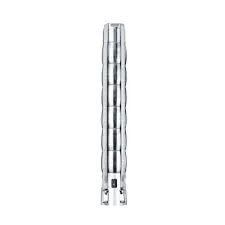Dec . 05, 2024 12:29 Back to list
Submersible Aquarium Pumps for Efficient Water Circulation and Filtration Solutions
Understanding Submersible Aquarium Pumps A Comprehensive Guide
When it comes to maintaining a healthy and thriving aquarium, one of the most crucial components is the pump. Specifically, submersible aquarium pumps play a significant role in ensuring optimal water circulation, oxygenation, and filtration. In this article, we will explore the features, benefits, and considerations associated with submersible aquarium pumps, making it easier for aquarists to select the right equipment for their aquatic environments.
What Are Submersible Aquarium Pumps?
Submersible aquarium pumps are water-moving devices designed to be submerged underwater. Unlike external pumps, which sit outside the aquarium, submersible pumps operate within the water, making them ideal for a variety of aquarium setups, including freshwater, saltwater, and reef tanks. These pumps are typically used for circulating water, powering filter systems, creating water displays, or aiding in other functions like aeration and water mixing.
Key Features of Submersible Pumps
1. Compact Design Most submersible pumps are designed to take up minimal space, which is especially beneficial in smaller tanks or tightly arranged setups. Their sleek profile allows them to fit discreetly under rocks, plants, or decorations.
2. Noise Levels Many aquarists opt for submersible pumps because they tend to operate quietly. Unlike external pumps, which can generate vibration and noise, submersible pumps are often insulated by the water, providing a serene environment for both fish and owners.
3. Energy Efficiency Modern submersible pumps are often designed to be energy-efficient, consuming less power while providing sufficient flow rates. This efficiency can lead to cost savings over time, making them a preferred choice for eco-conscious aquarists.
4. Versatility These pumps come in various sizes and flow rates, allowing hobbyists to choose a model that best fits their aquarium's needs. Some pumps are adjustable, providing the ability to control the flow of water based on specific needs such as tank size, species being kept, or filtration requirements.
Benefits of Using Submersible Pumps
1. Improved Water Quality By ensuring constant movement of water, submersible pumps help prevent stagnation and improve overall water quality. This circulation is crucial for distributing heat, nutrients, and oxygen evenly throughout the aquarium, which is vital for the health of aquatic life.
aquarium pumps submersible

2. Enhanced Oxygenation Submersible pumps facilitate gas exchange at the water's surface, which is essential for maintaining adequate oxygen levels in the tank. This is particularly important in densely stocked aquariums where oxygen demand can be high.
3. Simplicity of Installation Submersible pumps usually come with easily accessible fittings and configurations that simplify the installation process. Most only require a power source and can be quickly set up by following the manufacturer’s instructions.
Choosing the Right Submersible Pump
When selecting a submersible aquarium pump, consider the following factors
1. Tank Size Choose a pump with a flow rate suitable for the size of your aquarium. Typically, the flow rate should be about 5 to 10 times the volume of the tank per hour.
2. Purpose Clarify how you want to use the pump — whether it’s for water circulation, filtration, or creating a water feature. Different applications may require different specifications.
3. Type of Aquarium The needs of a freshwater tank will differ from a saltwater or reef aquarium. Consider the specific requirements of the species you are keeping when selecting the pump.
4. Maintenance Look for pumps that are easy to clean and maintain. Submersible pumps should be regularly checked for debris that might affect performance.
Conclusion
Submersible aquarium pumps are an essential investment for anyone looking to create a balanced and healthy aquatic environment. With their compact design, energy efficiency, and ability to enhance water quality, they are ideal for both novice and experienced aquarists. By understanding their features and benefits, individuals can make informed choices that best suit their specific aquarium needs, ensuring a beautiful and thriving underwater ecosystem.
-
Submersible Water Pump: The Efficient 'Power Pioneer' of the Underwater World
NewsJul.01,2025
-
Submersible Pond Pump: The Hidden Guardian of Water Landscape Ecology
NewsJul.01,2025
-
Stainless Well Pump: A Reliable and Durable Pumping Main Force
NewsJul.01,2025
-
Stainless Steel Submersible Pump: An Efficient and Versatile Tool for Underwater Operations
NewsJul.01,2025
-
Deep Well Submersible Pump: An Efficient 'Sucker' of Groundwater Sources
NewsJul.01,2025
-
Deep Water Well Pump: An Efficient 'Sucker' of Groundwater Sources
NewsJul.01,2025
-
 Submersible Water Pump: The Efficient 'Power Pioneer' of the Underwater WorldIn the field of hydraulic equipment, the Submersible Water Pump has become the core equipment for underwater operations and water resource transportation due to its unique design and excellent performance.Detail
Submersible Water Pump: The Efficient 'Power Pioneer' of the Underwater WorldIn the field of hydraulic equipment, the Submersible Water Pump has become the core equipment for underwater operations and water resource transportation due to its unique design and excellent performance.Detail -
 Submersible Pond Pump: The Hidden Guardian of Water Landscape EcologyIn courtyard landscapes, ecological ponds, and even small-scale water conservancy projects, there is a silent yet indispensable equipment - the Submersible Pond Pump.Detail
Submersible Pond Pump: The Hidden Guardian of Water Landscape EcologyIn courtyard landscapes, ecological ponds, and even small-scale water conservancy projects, there is a silent yet indispensable equipment - the Submersible Pond Pump.Detail -
 Stainless Well Pump: A Reliable and Durable Pumping Main ForceIn the field of water resource transportation, Stainless Well Pump has become the core equipment for various pumping scenarios with its excellent performance and reliable quality.Detail
Stainless Well Pump: A Reliable and Durable Pumping Main ForceIn the field of water resource transportation, Stainless Well Pump has become the core equipment for various pumping scenarios with its excellent performance and reliable quality.Detail
